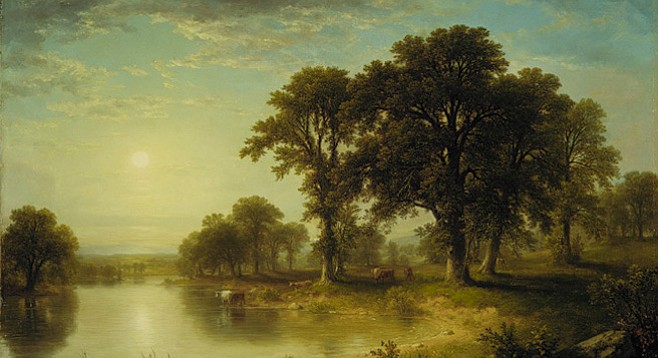 Facebook
Facebook
 X
X
 Instagram
Instagram
 TikTok
TikTok
 Youtube
Youtube

Our recent little thunderstorm reminded me of what is probably the best piece of summer music: Beethoven’s Symphony No. 6. There are fives sections of the symphony, one of which is a thunderstorm which passes through the countryside.
There is no doubt as to what Beethoven intended with this music since he wrote descriptive headings at the top of each section such as Gewitter Sturm. Thunder Storm. The storm in Beethoven’s music is more extensive than any storm we’ll ever have here in San Diego.
What makes this a great piece of music for summer is that it’s great music. Most classical music with a summer theme remains somewhat idyllic the entire time, and is no longer than about 15 minutes.
This is music written by a human being who understood winter. Beethoven understood winter beyond its attributes as a season. If we stop to consider it, we all understand winter. We all understand what Shakespeare meant by “the winter of our discontent.” We just express it differently — much differently.
We’ve all awakened on a summer morning when the day stretches out before us full of nothing but itself. I feel that in Beethoven’s music — what he called “the awakening of happy feelings” for the first section.
The second movement, the “scene by the brook” is about sitting by a brook doing nothing. This hearkens to Knoxville: Summer of 1915. “They are not talking much, and the talk is quiet, of nothing in particular, of nothing at all in particular, of nothing at all.”
We all want to get out there and do something with the summer. Maybe we can all get out there and do nothing for just a little bit this summer.
After the storm, Beethoven basks us in sunlight. He captures the feeling of those long golden beams that only exist on a late summer afternoon.
Beethoven is sharing a summer day with us. When is the last time you got to spend the day with a genius?


Our recent little thunderstorm reminded me of what is probably the best piece of summer music: Beethoven’s Symphony No. 6. There are fives sections of the symphony, one of which is a thunderstorm which passes through the countryside.
There is no doubt as to what Beethoven intended with this music since he wrote descriptive headings at the top of each section such as Gewitter Sturm. Thunder Storm. The storm in Beethoven’s music is more extensive than any storm we’ll ever have here in San Diego.
What makes this a great piece of music for summer is that it’s great music. Most classical music with a summer theme remains somewhat idyllic the entire time, and is no longer than about 15 minutes.
This is music written by a human being who understood winter. Beethoven understood winter beyond its attributes as a season. If we stop to consider it, we all understand winter. We all understand what Shakespeare meant by “the winter of our discontent.” We just express it differently — much differently.
We’ve all awakened on a summer morning when the day stretches out before us full of nothing but itself. I feel that in Beethoven’s music — what he called “the awakening of happy feelings” for the first section.
The second movement, the “scene by the brook” is about sitting by a brook doing nothing. This hearkens to Knoxville: Summer of 1915. “They are not talking much, and the talk is quiet, of nothing in particular, of nothing at all in particular, of nothing at all.”
We all want to get out there and do something with the summer. Maybe we can all get out there and do nothing for just a little bit this summer.
After the storm, Beethoven basks us in sunlight. He captures the feeling of those long golden beams that only exist on a late summer afternoon.
Beethoven is sharing a summer day with us. When is the last time you got to spend the day with a genius?
Comments